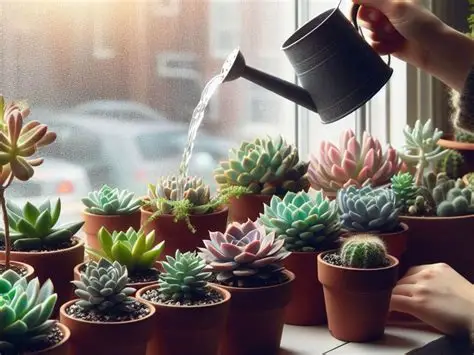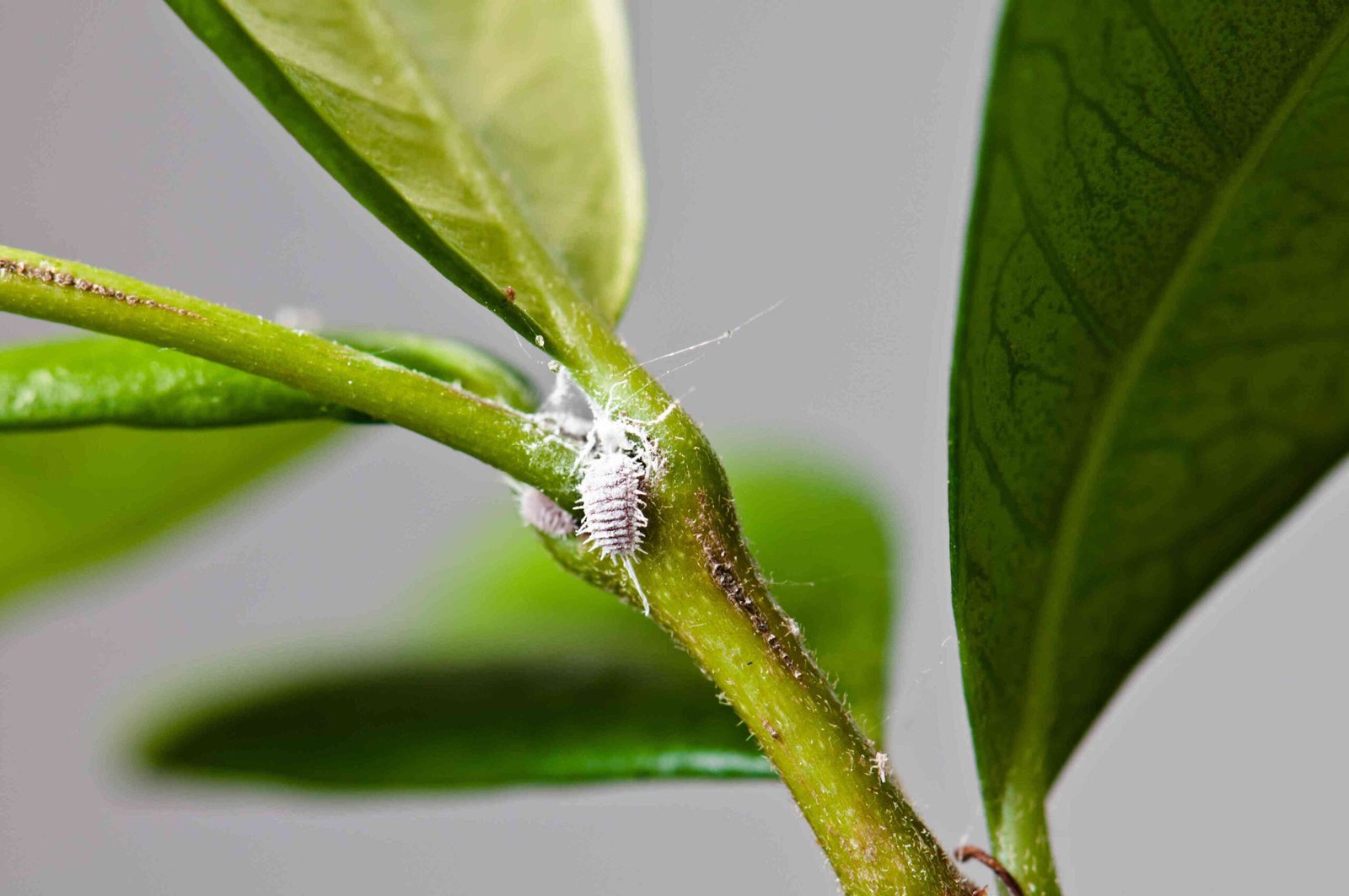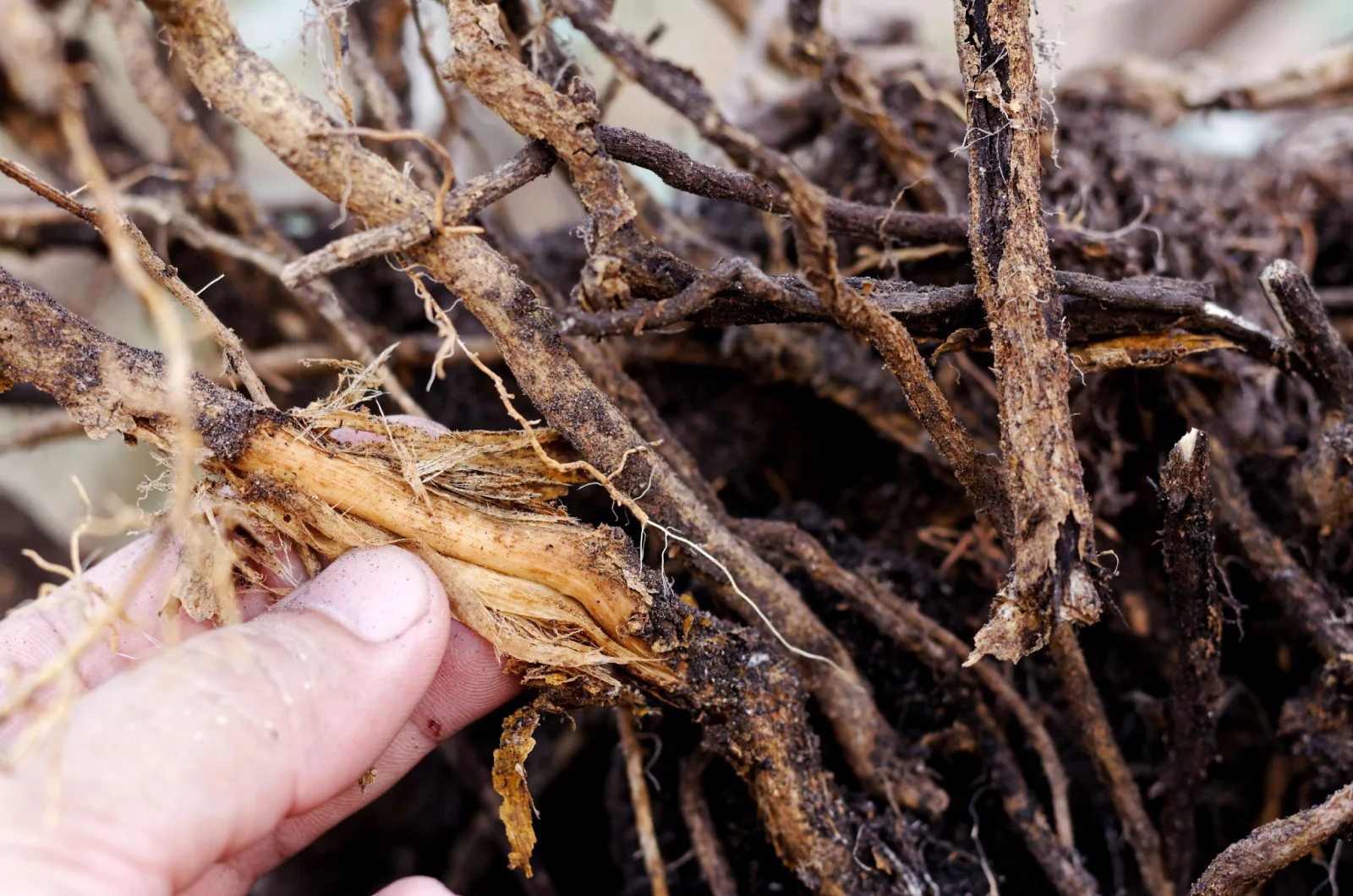Succulents are adored for their hardiness and sculptural beauty. They thrive in drought, tolerate a bit of neglect, and come in so many unique shapes that it’s hard not to fall in love with them.
But as forgiving as succulents are, overwatering is the number one cause of death—especially for new plant parents and apartment growers.
Don’t worry. If your succulent looks soft, mushy, or discolored, you’re not alone—and you’re not out of options. This guide offers a complete walkthrough on how to revive overwatered succulents, tailored for indoor gardeners and beginners.
We’ll cover early warning signs, rescue methods, recovery care, and long-term prevention tips, so your green buddy can bounce back stronger than ever.
Why Overwatering Happens Indoors
Succulents come from dry, well-draining environments—think deserts and rocky hillsides, not decorative ceramic pots on a shaded windowsill.
In apartments and indoor spaces, the conditions are very different. Lower light, higher humidity, limited airflow, and non-draining pots can all contribute to water retention in the soil.
This mismatch often results in root rot before you even realize something’s wrong. Understanding the root cause is the first step toward preventing it in the future.
How to Tell If Your Succulent Is Overwatered
Early detection is key. Watch for these common symptoms:
- Mushy, translucent, or blackened leaves (they may feel soft or fall off easily)
- Leaf drop — even healthy-looking leaves may fall unexpectedly
- Soggy, smelly soil that doesn’t seem to dry out
- Shriveled lower leaves that feel wet, not dry
- A leaning or collapsing plant base
- Visible mold or fungus around the base of the plant
Overwatered succulents often mimic underwatering at a glance, but underwatered leaves are dry and wrinkled, while overwatered ones are soft and squishy.
Is It Overwatered or Underwatered? Don’t Guess—Know
It’s heartbreaking when your succulent seems sick, and you don’t know why. Many plant lovers panic and water more when leaves droop—only to realize too late they’re drowning an already overwatered plant. Here’s how to tell the difference at a glance:
Overwatered:
- Leaves feel cool, squishy, or slippery (like overripe fruit)
- Soil smells musty or sour days after watering
- Stems or base show black or brown mushiness
Underwatered:
- Leaves feel warm, papery, or crispy
- Soil pulls away from the pot’s edges
- Plant perks up within hours of watering
Still unsure? Try the “tissue test”:
Gently press a leaf between tissue paper. If it leaves a wet mark, it’s overwatered. If it crumbles dry, it’s thirsty.
Step-by-Step Guide: How to Revive Overwatered Succulents
1. Take It Out of the Pot
Gently remove the succulent from its pot. Be slow and careful—overwatered plants are fragile. Brush off as much old, wet soil as possible.
2. Inspect and Prune the Roots
Healthy roots are white or tan and firm. Rotting roots are brown, black, or mushy. Use a clean, sharp pair of scissors to cut off any rotted or discolored roots.
Let the remaining healthy roots sit out in the open air for a few hours (or overnight) to help them dry out.
3. Let the Plant Callous
Set your succulent in a shaded, dry location for 2 to 5 days. This gives it time to recover and allows any wounds or root cuts to form protective calluses.
This step is especially important if you’ve removed a lot of damaged tissue.
4. Prepare a New Pot
Choose a container that has at least one drainage hole. Terracotta or unglazed clay pots are ideal—they breathe and help evaporate moisture faster.
Fill it with fresh cactus or succulent soil, or create your own blend with:
- 2 parts potting soil
- 1 part coarse sand
- 1 part perlite or pumice
Avoid reusing the old soil—it may harbor bacteria or fungal spores.
5. Replant, But Don’t Water Yet
Place the succulent into the new soil, adjusting it so the base sits above the soil line. Do not water yet—let the plant settle in dry soil for at least another 4–7 days.
Once the plant is adjusted and the roots begin to anchor, you can resume light watering.
Lighting: Recovery-Friendly Light Is Key
Succulents recovering from overwatering need bright but indirect light. Harsh sunlight can burn weakened leaves, while too little light leads to more stress.
- Set your plant near a south- or west-facing window
- Use sheer curtains to diffuse direct sun
- Rotate the plant every few days so all sides get light
- If natural light is poor, use a full-spectrum grow light for 10–12 hours per day
Avoid placing recovering succulents in dark corners or under direct midday sun.
Watering After Recovery: The Right Way to Hydrate
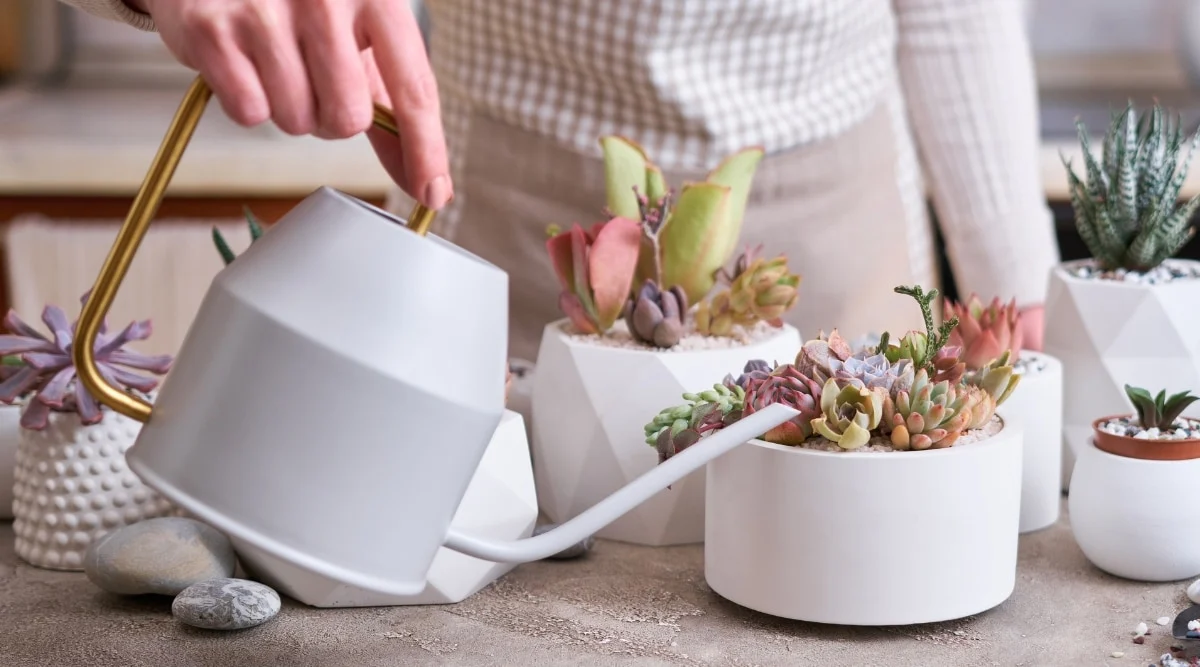
When your succulent is healthy again, change your watering strategy:
- Wait until the top 1–2 inches of soil are bone dry
- Use the “soak and dry” method—water thoroughly, then let it drain fully
- Reduce watering in cooler seasons when the plant is dormant
- Don’t water on a schedule—water based on soil dryness
Using your finger or a moisture meter is more reliable than sticking to weekly routines.
Soil and Potting: Prevention Starts at the Roots
Soil makes a huge difference. Succulents need fast-draining, loose-textured soil that allows air to reach the roots.
- Avoid heavy, moisture-retaining potting mixes
- Always use pots with drainage holes
- Repot every 1–2 years to refresh soil and check root health
If your plant lives in a decorative pot without drainage, either drill holes or keep it in a nursery pot you can lift out for watering.
Temperature and Humidity: Comfort Matters
Succulents thrive between 60–80°F (16–27°C) and in low humidity.
Too much moisture in the air slows evaporation and can worsen root rot. If your home is humid:
- Use a fan to improve air circulation
- Avoid grouping succulents too closely
- Keep them away from bathrooms and kitchens
Avoid placing them near cold drafts or heat sources like radiators or air vents.
Dormancy and Seasonal Adjustments
Succulents slow down in colder months—this is called dormancy. During this rest phase (usually fall through winter), your plant won’t grow much and won’t need much water.
Care Tips During Dormancy:
- Water less often — about once every 3–5 weeks.
- Avoid fertilizer — your plant isn’t actively growing.
- Keep it warm — but away from heaters and cold drafts.
- Provide bright light — natural or with a grow light if needed.
Understanding dormancy helps prevent overwatering when your succulent isn’t taking up moisture efficiently. Let your plant rest—normal growth will resume in spring
Propagation: A Backup Plan If All Else Fails
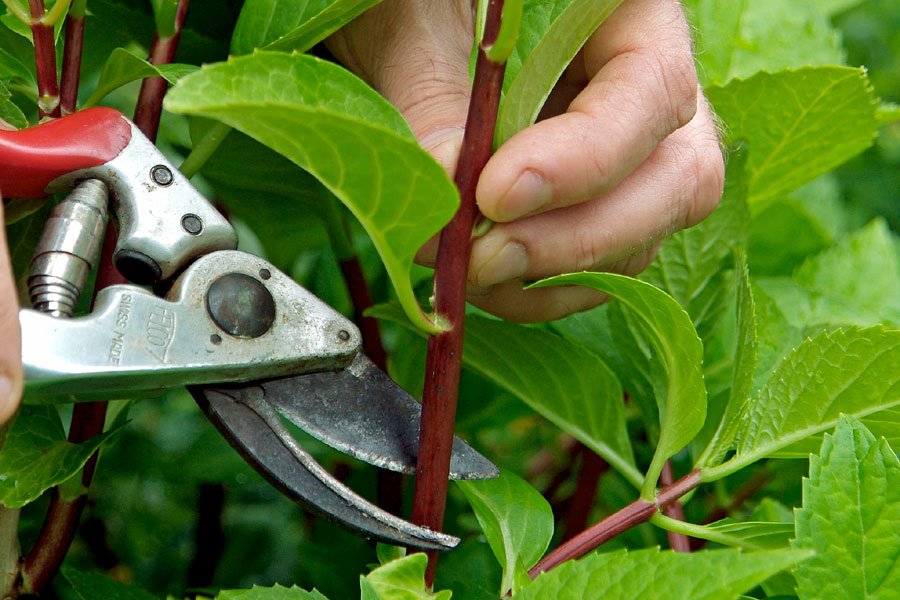
Sometimes, the main plant can’t be saved—but a leaf or healthy stem might be.
How to Propagate:
- Gently twist off a healthy leaf or cut a clean stem
- Let it dry for 2–3 days until the cut end callouses
- Place on top of dry succulent soil
- Mist lightly every few days (never soak)
- In a few weeks, roots and new growth will appear
Propagation gives you a second chance—and can even grow your collection.
When All Seems Lost: Regrowing from a Single Leaf
Sometimes, the main plant is too far gone—but hope isn’t lost. Many succulents can regrow from just one healthy leaf. I’ve seen jade plants rise from fallen leaves that looked like casualties. Here’s how:
- Choose wisely: Pick a plump, unblemished leaf from near the base. Avoid damaged or translucent ones.
- The callous is crucial: Let it dry 3–5 days until the torn end forms a dry “scab.” Rushing this invites rot.
- Lay, don’t bury: Place the leaf on dry succulent soil—like a butterfly resting on sand. Never tuck it in.
- The waiting game: In 4–6 weeks, tiny pink roots emerge. Mist only the soil under them (not the leaf!).
- First sign of life: When a rosette forms, resist repotting until mother leaf withers. It’s feeding the baby.
Common Mistakes to Avoid
- Watering too often — always let the soil dry completely.
- No drainage holes — water must escape to avoid rot.
- Wrong soil — avoid heavy or moisture-retaining mixes.
- Watering after repotting — wait a few days before watering.
- Feeding during dormancy — not needed and may stress the plant.
- Ignoring stress signs — like soft, dropping leaves or soil smell.
Keeping an eye on these basics can make the difference between a struggling succulent and a thriving one.
Apartment-Specific Prevention: Small Space Wisdom
Apartments create perfect storms for overwatering: low light, stagnant air, and our tendency to “love” plants to death. As a fellow small-space gardener, here’s what truly works:
- The pot lift trick: After watering, lift your pot. Feel its weight. Remember it. When it feels light as a feather, check the soil—it’s likely dry.
- Terracotta’s secret: Its porous walls wick moisture from soil like a straw. In humid studios, this is your best defense.
- Fan your plants: Run a ceiling or desk fan nearby for 2 hours after watering. It mimics desert breezes, drying soil faster.
- Winter rules: In heated apartments, water half as often. Your succulent is asleep, not thirsty.
Pests and Problems After Overwatering
Weakened succulents attract pests and disease:
- Mealybugs look like cotton clusters
- Fungus gnats swarm the soil
- Root rot can spread to stems and leaves
Fixes:
- Remove pests manually with alcohol-dipped cotton swabs
- Apply neem oil or insecticidal soap
- Let the soil dry completely
- Repot if infestation is severe
Prevention always starts with dry, well-draining conditions.
Drought / Salt Tolerance and Water Type
Succulents are drought-tolerant—it’s why they suffer from excess water. But water quality matters too.
Use filtered, distilled, or rainwater if your tap water is heavily chlorinated or softened. Mineral buildup in soil can also damage roots and hinder absorption.
Stick to species that are more tolerant of indoor stress, such as:
- Haworthia
- Gasteria
- Jade Plant (Crassula ovata)
- Aloe vera
Invasiveness and Root Spread
Succulent roots are usually shallow, but when overwatered, they can become compressed or rot easily in tight pots.
Watch for:
- Roots growing out of drainage holes
- Compact soil that stays wet
- Slowed growth or a top-heavy plant
These are signs it’s time to repot into a container just one size up.
When Revival Fails—And Why It’s Not Your Fault
Overwatering damage often starts before you notice symptoms. Rot can spread silently in roots or stems long before leaves soften. By the time you act, it may be too late.
This isn’t failure—it’s biology. Nurseries sometimes overwater plants, and internal decay isn’t visible. Your care couldn’t reverse existing rot.
Move forward with wisdom:
- Propagate healthy leaves/stems as new starts
- Discard infected soil to protect other plants
- Apply your prevention skills to future succulents
Your experience now shields the next plant.
Bottom Line: You Can Absolutely Save Your Succulent
Reviving an overwatered succulent isn’t just about drying it out—it’s about understanding what went wrong and adjusting your care moving forward. Whether you caught it early or had to cut back everything and start from a leaf, you’re giving your plant a second chance.
So:
- Be patient
- Give it light
- Water thoughtfully
- Use breathable pots and soil
And next time? You’ll recognize the signs before it’s too late.
FAQs
Q1: How long does it take to revive an overwatered succulent?
Usually 2–6 weeks depending on the extent of root rot and overall plant health.
Q2: Can a succulent survive with no roots?
Yes! If the leaves and stem are firm, it can regrow roots after callousing and being replanted in dry soil.
Q3: Should I remove all the soil when repotting?
Yes. Remove as much old soil as possible, especially if it’s soggy or contains mold.
Q4: What’s the best soil mix for succulents?
Use a cactus/succulent mix or combine potting soil with sand and perlite. Avoid mixes with peat moss.
Q5: Can I water my succulent immediately after repotting?
No. Wait 4–7 days to allow any root damage to heal before watering.
